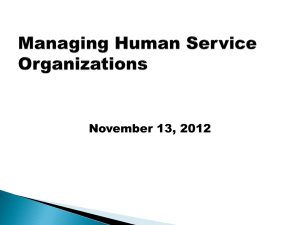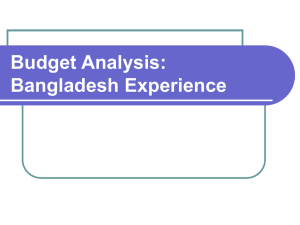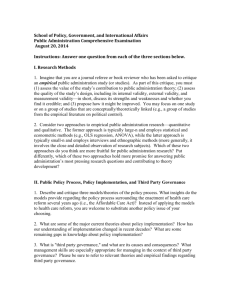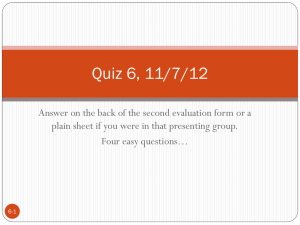The PRR - Middle States Commission on Higher Education
advertisement
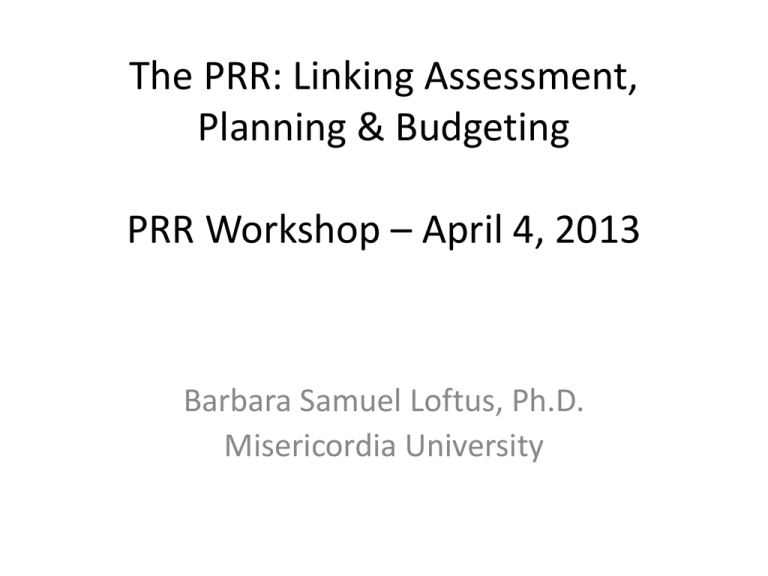
The PRR: Linking Assessment, Planning & Budgeting PRR Workshop – April 4, 2013 Barbara Samuel Loftus, Ph.D. Misericordia University (2) PRR Objectives • To determine the current status of the implementation of processes for the assessment of institutional effectiveness + assessment of student learning outcomes (Standards 7 & 14) • To assess the extent to which linked institutional planning + budgeting processes are in place (Standards 2 & 3) Institutional Effectiveness + Student Learning Outcomes • Demonstration of organized, documented + sustained assessment processes • Clearly articulated institutional + unit-level goals – Student learning outcomes at institutional, program + course level • Implemented strategies to achieve those goals • Assessed achievement of those goals Institutional Effectiveness + Student Learning Outcomes • Used the results of assessments to: – Improve programs, services, teaching, + learning – Inform planning – Inform resource allocation decisions Institutional Effectiveness + Student Learning Outcomes • Note: – Evidence provided of assessment results – Processes + results are documented – Structures in place to ensure success – Evidence of a culture of assessment – faculty, staff, senior leadership – Guidelines, policies, resources + support of assessment initiatives – Communication-sharing of results Institutional Effectiveness + Student Learning Outcomes • Primary Context: – Standard 7: Institutional Assessment – Standard 14: Assessment of Student Learning • Resource: “Assessing Student Learning + Institutional Effectiveness: Understanding Middle States Expectations” Assessing Institutional Effectiveness • Development of linkages: – Institutional Mission + Institutional Goals – Administrative Unit + Academic Program Goals (Annual Reports; Measures of Success; Assessment Results; Budget Resources) – Strategic Plan Goals (Performance Indicators) Assessing Institutional Effectiveness • Examples of Institutional Effectiveness College/University Measurements: – NSSE – Graduating Senior Surveys – Alumni Surveys – Retention + Graduation Rates Assessing Institutional Effectiveness • Strategic Plan Annual Review Process = oversight + tracking progress of strategic plan goals (in terms of goal achievement) • Assessment of Key Factors in Strategic Plan: – Timely completion of action steps – Progress of quantitative performance indicators toward goals – Achievement of financial targets – Need for changes in context of plan or implementation Assessment of Student Learning • Academic Programs – Links between program goals, institutional mission and related institutional goals, strategic plan goals + general education program – Program learning outcomes (align course outcomes with program-level outcomes) – Methods of assessment – Implementation of assessment plans – Use of results to improve student learning Assessment of Student Learning • Example: Academic Program Annual Report – Documented program assessment plan – Student learning outcomes assessment report – Anticipated changes based on assessment results – Resources (budget requests) required for improvements Assess Institutional Effectiveness + Student Learning Summary Points: • Evidence of organized + sustained processes • Evidence that results are being used to improve programs + services • Evidence that results are being used to inform planning + resource allocation decisions Linked Institutional Planning + Budgeting Processes • Thorough overview + analysis of institution’s planning + budgeting processes • Demonstration of how those processes are integrated + linked • Evidence of key planning documents • Primary Context: Standard 2: Planning, Resource Allocation, + Institutional Renewal Linked Institutional Planning + Budgeting Processes • Note: – Ongoing planning + resource allocation based on mission + goals – Objectives developed to achieve goals – Use assessment results for institutional renewal – Evidence of strategic plan implementation + resource allocation – Evaluation of success of strategic plan + resource allocation as quality improvement Budget Process Goals • Support the Strategic Plan – Allocate resources needed to implement successfully – Congruence of the annual budget with strategic plan objectives + action steps • Support Department + Academic Program Operational Needs = Annual Budget Development Process Annual Budget Development Process • Organization of Administrative Department/ Academic Program Annual Report – Link department/program goals to institutional goals – Enrollment trends/ SWOT/ Student Support – 3-year forecasts – enrollment expectations, faculty/ staff requests, expense requirements, capital needs – Resources required for improvements based on assessment information Linked Institutional Planning + Budgeting Processes • Summary Points • Evidence of documented + inclusive processes • Evidence of integrated strategic, department + academic program plans – Ensure that institution’s mission + vision remain central – Revenues + expenses are in proper relationship – Capital needs are defined






